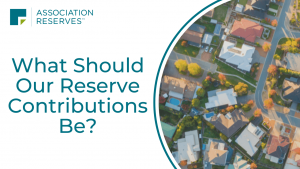
How to Get Your HOA On Board with Reserve Funding
Explore how to respond to your fellow board members’ concerns about funding reserves so you can make sure your community is taken care of!

Explore how to respond to your fellow board members’ concerns about funding reserves so you can make sure your community is taken care of!

Why does your Reserve Study include 3% inflation long term when CPI is > 8% and some Construction Indexes are using inflation rates of over 20%?

Interest earnings bring income to the association that inflation takes away. But do they offset each other? Well first, it helps to understand the difference between the two.

The scope & schedule of an Association’s reserve expenses are defined in the Reserve Study’s Component List. But once the Component List has been established, should the Reserve contributions necessary to fund those expenses be calculated using the “Straight Line” Method (officially called the Component Method) or the “Cash Flow” Method (sometimes called the “Pooled” Method)?

Someone who attended one of our recent webinars asked an interesting follow-up question worth sharing. His association manager had recently told him that a Funding Plan based on the Straight Line methodology (also known as the Component Method in National Reserve Study Standard terminology) was more accurate than a Funding Plan based on the Cash Flow methodology, and he wanted my opinion on the matter.
